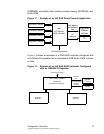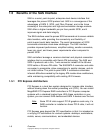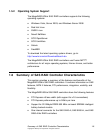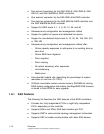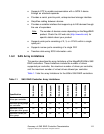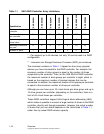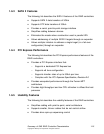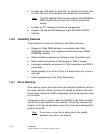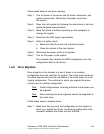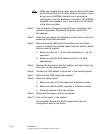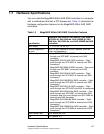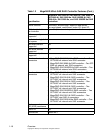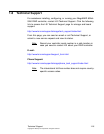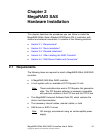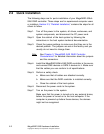
Summary of SAS RAID Controller Characteristics 1-15
Copyright © 2009 by LSI Corporation. All rights reserved.
Follow these steps to use drive roaming:
Step 1. Turn off power to the server and all drives, enclosures, and
system components. Disconnect the power cords from
the system.
Step 2. Open the host system by following the instructions in the host
system technical documentation.
Step 3. Move the drives to different positions on the backplane to
change the targets.
Step 4. Determine the SAS target requirements.
Step 5. Perform a safety check.
a. Make sure that the drives are inserted correctly.
b. Close the cabinet of the host system.
Step 6. Reconnect the power cords to the system.
Step 7. Turn on the power to the system.
The controller then detects the RAID configuration from the
configuration data on the drives.
1.6.8 Drive Migration
Drive migration is the transfer of a set of drives in an existing
configuration from one controller to another. The drives must remain on
the same channel and must be reinstalled in the same order as in the
original configuration. The controller to which you migrate the drives
cannot have an existing configuration.
Note:
Partial configurations, including individual virtual drives, can
be migrated.
Note:
Drive roaming and drive migration cannot be supported at
the same time.
Follow these steps to migrate drives:
Step 1. Make sure that you clear the configuration on the system to
which you migrate the drives, to prevent a configuration data
mismatch between the drives and the NVRAM.



